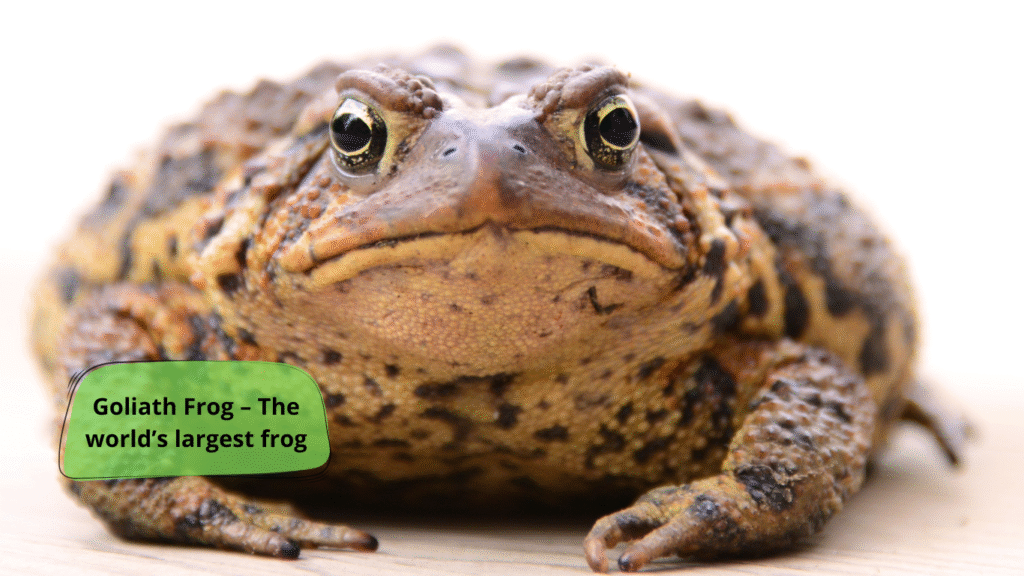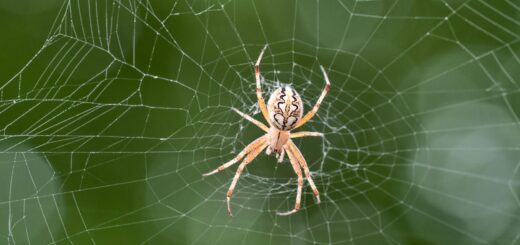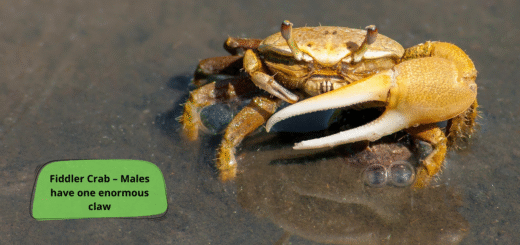Goliath Frog: Nature’s Giant Leaper of the African Rainforests
Meet the Goliath Frog
The Goliath frog (Conraua goliath) is the largest frog in the world, and it lives up to its name in both size and strength. Native to the fast-flowing rivers and waterfalls of Cameroon and Equatorial Guinea, this giant amphibian can grow up to 32 cm (12.6 inches) in length and weigh over 3.3 kg (7.3 pounds)—as big as a small house cat!

Where Does the Goliath Frog Live?
Goliath frogs are found exclusively in central African rainforests, where they thrive in humid, tropical environments with abundant freshwater. These frogs prefer habitats near rocky streams, where the fast-moving water helps oxygenate the water—vital for the survival of their eggs and tadpoles.
Fascinating Goliath Frog Facts
- World’s Largest Frog: No other frog species even comes close in size.
- Nature’s Builders: Goliath frogs are one of the few frog species known to build nests by moving stones—sometimes weighing half their body weight!
- Nocturnal Creatures: Goliath frogs are mostly active at night, hunting for insects, crustaceans, fish, and even small snakes.
- Excellent Swimmers: Their strong legs make them powerful swimmers and excellent jumpers.
- Surprisingly Silent: Unlike other frogs, Goliaths do not croak. Scientists believe their lack of vocal sacs may be linked to their unique behavior.
Lifecycle and Reproduction
During the breeding season, male Goliath frogs construct nest pools by clearing leaves and moving rocks to create a safe place for females to lay eggs. A single female can lay hundreds of eggs in one season. Tadpoles take 2 to 3 months to metamorphose into frogs, and the juveniles remain in the nest pool until they are ready to survive in the wild.
Is the Goliath Frog Endangered?
Yes, the Goliath frog is currently listed as Endangered by the International Union for Conservation of Nature (IUCN). Their population is declining due to:
- Habitat loss from deforestation and agriculture
- Pollution in rivers and streams
- Overhunting for bushmeat and the pet trade
- Climate change affecting their fragile ecosystems
Conservation efforts are crucial to protect this unique species and its rainforest habitat.
Why Should We Care About the Goliath Frog?
Beyond its size and strength, the Goliath frog plays a vital role in its ecosystem. As both predator and prey, it helps maintain the delicate balance of river and forest environments. Studying this species can also provide insights into amphibian health, climate resilience, and biodiversity conservation.
Final Thoughts
The Goliath frog is a living marvel of evolution—a silent, giant guardian of African rivers. Its strength, intelligence, and ecological importance make it a species worth protecting. With continued conservation efforts, we can help ensure that future generations will still be able to witness the world’s largest frog in the wild.








